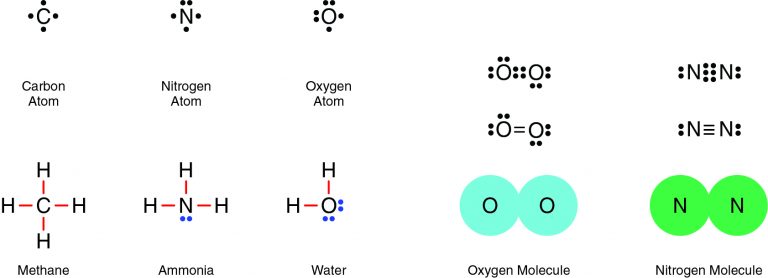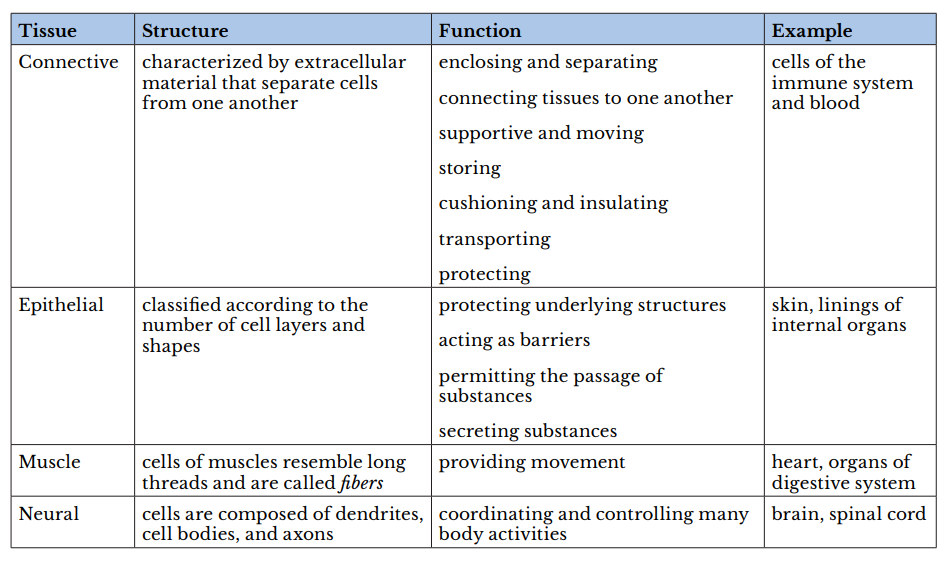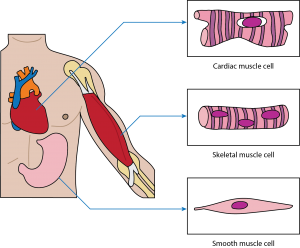What type of bond forms between nitrogen and oxygen, and why?
Ionic, because electrons are shared
Covalent, because electrons are shared
Ionic, because electrons are transferred
Covalent, because electrons are transferred
Correct Answer : B
Nitrogen and oxygen are both nonmetals, which means they will share electrons in a covalent bond. For example, two oxygen atoms form a double bond, in which two pairs of electrons (four electrons total) are shared. Similarly, two nitrogen atoms form a molecule with a triple bond, in which three pairs of electrons (six electrons total) are shared.

TEAS 7 Exam Quiz Bank
HESI A2 Exam Quiz Bank
Find More Questions 📚
Teas 7 Questions: We got the latest updated TEAS 7 questions
100% Money Refund: 100% money back guarantee if you take our full
assessment pass with 80% and fail the actual exam.
Live Tutoring: Fully customized live tutoring lessons.
Guaranteed A Grade: All students who use our services pass with 90%
guarantee.
Related Questions
Correct Answer is A
Explanation
Atissueis a group of cells with similar structure and function and similar extracellular substances located between the cells. The table below describes the four primary tissues found in the human body.
body.

Correct Answer is B
Explanation
Skeletal muscle: This muscle cell is striated, long, and cylindrical. There are many nuclei in a skeletal muscle cell. Attached to bones in the body, skeletal muscle contracts voluntarily, meaning that it is under conscious control.
Smooth muscle: This muscle consists of nonstriated muscle cells that are spindle-shaped. Like cardiac muscle cells, smooth muscle cells contain one nucleus. This muscle type is found in the walls of internal organs like the bladder and stomach. Smooth muscle contraction is involuntary and controlled by the autonomic nervous system.
Cardiac muscle: This muscle consists of muscle cells that are striated, short, and branched. These cells contain one nucleus, are branched, and are rectangular. Cardiac muscle contraction is an involuntary process, which is why it is under the control of the autonomic nervous system. This muscle is found in the walls of the heart.

Correct Answer is D
Explanation
Kidneys makes urine isincorrect.Kidneys do not make urine. They help regulate water balance, regulate levels of electrolytes such as sodium and potassium, and eliminate metabolic wastes. Urine is a byproduct of these functions.
As a person ages, kidney tissue and filtration capacity increase isincorrect. As a person ages, the kidneys and bladder change. This can affect functions such as bladder control and how well the kidneys filter blood. Kidney changes range from a decrease in kidney tissue to decreased filtration capacity.
Kidneys help regulate water balance iscorrect.Kidneys help regulate water balance, regulate levels of electrolytes such as sodium and potassium, and eliminate metabolic wastes. Urine is a byproduct of these functions.
Regulates levels of electrolytes such as sodium and potassium iscorrect.There must be a continual balance of water and salt in the blood. The urinary system, specifically the kidneys, help maintain this balance. It also balances levels of metabolites or electrolytes such as sodium, potassium, and calcium.
Eliminates metabolic wastes iscorrect. Urea, creatinine, uric acid, and ammonium are the primary types of nitrogenous wastes excreted from the body. The urinary system also detects and excretes excess water from the blood and out of the body.
Correct Answer is B
Explanation
Pathogenis an infectious foreign body that enters the body and causes disease or illness to the person. There are five types of pathogens: viruses, bacteria, fungi, protozoa, and worms. Pathogens have antigen proteins found on their surface and are unique to each pathogen.
Antibodyis a protein produced by the body’s immune system when it detects harmful substances (antigens). There are many different antibodies found in the body. Each one is unique and protects the body against the specific antigen that it detects at any given time. If there are no antibodies for a specific antigen, the more likely you are to develop an illness.
Vaccinationsare the introduction of a dead or disabled pathogen or of a harmless microbe with the protein of a pathogen on its surface into the body. Often administered through needle injection, to stimulate the immune system to produce immunity to a specific disease Immunity protects the body from a disease when exposed to it.
There are four types of immunity: natural/passive, natural/active, artificial/passive, and artificial/ active.
- Natural/passive – Babies receive immunities from breastmilk.
- Natural/active – The body produces antibodies to combat an illness when a person becomes sick.
- Artificial/passive – This immunity is temporary and requires doses of serum to maintain the immunity.
- Artificial/active – A vaccination provides artificial/active immunity.
Correct Answer is D
Explanation
Once the food has been masticated in the oral cavity (mouth), it is then swallowed and travels back into the pharynx down into the esophagus, which leads into the stomach.
Correct Answer is C
Explanation
Inductive reasoning involves making specific observations and using them to make broad statements. The student observes that all of the tigers have the same stripe pattern. He can use this observation to make the broad statement that all the tigers’ offspring will have the same stripe pattern.
Inductive reasoninginvolves drawing a general conclusion from specific observations. This form of reasoning is referred to as the “from the bottom up” approach. Information gathered from specific observations can be used to make a general conclusion about the topic under investigation. In other words, conclusions are based on observed patterns in data.
Correct Answer is A
Explanation
Robert Hooke discovered the first cells in the mid-eighteenth century. The cell theory is a theory because it is supported by a significant number of experimental findings. The cell theory took many years to be developed because microscopes were not powerful enough to make such observations.
This theory, or in-depth explanation, about cells consists of three parts:
- All living things are composed of one or more cells.
- Cells are alive and represent the basic unit of life.
- All cells are produced from pre-existing cells.
Correct Answer is B
Explanation
In this reaction, chlorine (Cl2) is an element in the reaction that replaces iodine in the compound sodium iodide (NaI). This allows chlorine to form a compound with sodium (NaCl) and leaves iodine (I2) as an element.
Synthesisreactions involve two or more reactants (A and B) combining to form one product (AB). In the example provided, hydrogen (H2) and oxygen (O2) begin as separate elements. At the end of the reaction, the hydrogen and oxygen atoms are bonded in a molecule of water (H2O).
Decompositionreactions have only one reactant (AB) that breaks apart into two or more products (A and B). In the example above, hydrogen peroxide (H2O2) breaks apart into two smaller molecules: water (H2O) and oxygen (O2).
Single-replacementreactions involve two reactants, one compound (AB) and one element (C). In this type of reaction, one element replaces another to form a new compound (AC), leaving one element by itself (B). In the example, zinc replaces hydrogen in hydrochloric acid (HCl). As a result, zinc forms a compound with chlorine, zinc chloride (ZnCl2), and hydrogen (H2) is left by itself.
Double-replacementreactions involve two reactants, both of which are compounds made of two components (AB and CD). In the example, silver nitrate, composed of silver (Ag1+) and nitrate (NO31-) ions, reacts with sodium chloride, composed of sodium (Na1+) and chloride (Cl1-) ions. The nitrate and chloride ions switch places to produce two compounds that are different from those in the reactants.
Combustionreactions occur when fuels burn, and they involve specific reactants and products, as seen in the examples below. Some form of fuel that contains carbon and hydrogen is required. Examples of such fuels are methane, propane in a gas grill, butane in a lighter, and octane in gasoline. Notice that these fuels all react with oxygen, which is necessary for anything to burn. In all combustion reactions, carbon dioxide, water, and energy are produced. When something burns, energy is released, which can be felt as heat and seen as light.
Correct Answer is D
Explanation
Mendel developed theories of genetics that scientists around the world use today.
From experiments with garden peas, Mendel developed a simple set of rules that accurately predicted patterns of heredity. He discovered that plants eitherself-pollinateorcross-pollinate, when the pollen from one plant fertilizes the pistil of another plant. He also discovered that traits are eitherdominantorrecessive. Dominant traits are expressed, and recessive traits are hidden.
Mendel’s Theory of Heredity
To explain his results, Mendel proposed a theory that has become the foundation of the science of genetics. The theory has five elements:
- Parents do not transmit traits directly to their offspring. Rather, they pass on units of information calledgenes.
- For each trait, an individual has two factors: one from each parent. If the two factors have the same information, the individual ishomozygousfor that trait. If the two factors are different, the individual isheterozygousfor that trait. Each copy of a factor, orgene, is called anallele.
- The alleles determine the physical appearance, orphenotype. The set of alleles an individual has is itsgenotype.
- An individual receives one allele from each parent.
- The presence of an allele does not guarantee that the trait will be expressed.
Correct Answer is D
Explanation
The cardiovascular system is closely associated with hematopoiesis because it includes the heart and blood vessels, which are responsible for circulating blood throughout the body. Hematopoiesis, the process of blood cell formation, primarily occurs in the bone marrow, which is part of the skeletal system. However, the cardiovascular system plays a crucial role in transporting these blood cells to various parts of the body once they are produced in the bone marrow.
So, while the skeletal system provides the site for hematopoiesis, the cardiovascular system is responsible for distributing the blood cells, making it the most closely associated system in this context.
This question was extracted from the actual TEAS Exam. Ace your TEAS exam with the actual TEAS 7 questions, Start your journey with us today
Visit Naxlex, the Most Trusted TEAS TEST Platform With Guaranteed Pass of 90%.
Money back guarantee if you use our service and fail the actual exam. Option of personalised live tutor on your area of weakness.
